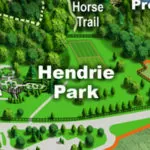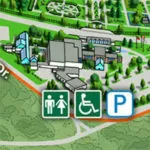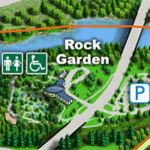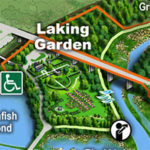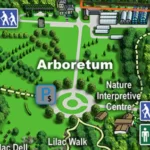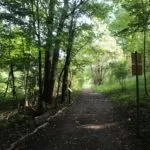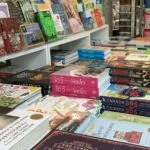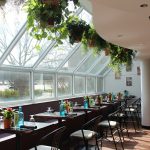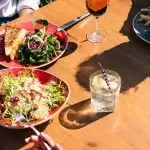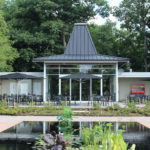| Membership | Price (+HST) |
|---|---|
| Single | $85/year |
| Single Plus | $120/year |
| Family | $130/year |
| Family Plus | $175/year |
| Contributing | $300/year |
| Supporting | $600/year |
| Sustaining | $1,000/year |
| Benefactor's Circle | $2,500/year |
| Director's Circle | $5,000/year |
| President's Circle | $10,000/year |
Royal Botanical Gardens as a Museum of the Land
By Dr. David Galbraith, Head of Science, Royal Botanical Gardens
Monday May 18, 2020 is International Museum Day. Museums today are much more exciting and engaging than was the case in years past. Museums are places where peoples’ curiosity mingles with new ideas and skillfully designed exhibits featuring carefully selected objects that help tell an important story. Museums are becoming social spaces (although because of the COVID-19 pandemic those spaces are virtual for the time being), places for interaction, discovery, and creativity. At their best, museums challenge the social norm and are the guardians of our shared cultural knowledge. They help us tell stories that give our collective experiences meaning and depth.
There are many kinds of museums, ranging from big classical institutions holding extensive collections of natural or cultural objects, to living museums recreating life from some point in the past, usually in a historical setting, to museums of the living world. The ties between botanical gardens and museums are very strong. In fact, the American Association of Museums expressly classifies botanical gardens as museums. Like all museums, botanical gardens develop, document and steward the collections used to tell their stories. The ties are so close that many major museums – like the Canadian Museum of Nature in Ottawa and the Smithsonian Institute in Washington, DC – include formal or botanical gardens in their collections and programming. Both major public gardens and botanical gardens are institutions that maintain collections of living plants for public display, education, conservation, and research purposes1.
Royal Botanical Gardens is in that sense a museum. As a museum, we develop, curate, and maintain collections of authentic objects, both living and non-living, for which careful records are maintained. We label those on display, educate and interpret by telling stories that make meaning and engage people of all ages. We have a bigger goal of connecting people with plants. We operate at a landscape level where all these pieces are part of living systems within both natural and cultural landscapes.
Over 40 collections of living plants fill sections of the gardens, from Lilacs and Magnolias to Lilies and Iris. As of January 2020, our plant records include 181,139 individual plants, representing 6,916 species, cultivars, or varieties of plants of all kinds. These collections are time capsules of horticulture, carrying the genes of plants that breeders have selected over the years. In some cases, the individual plants are extremely rare examples of plants that were once popular. All these individual objects become collections with the help of curators: specialists who know a great deal about their subjects and how to bring out the stories they represent.
In another way Royal Botanical Gardens is a museum too. We are far more than “gardens of collections” (although collections are central to our identify as a botanical garden). Royal Botanical Gardens is, in fact, a collection of individual properties including gardens, parklands, and nature sanctuaries. Just like other museum collections, these areas can be described, interpreted, and curated to help RBG tell its story. These areas can be described as cultural heritage landscapes, because the stories of various cultures can be told through their interpretation today. Museums and botanical gardens are also growing in their roles for society. Rather than presenting static displays, many are functioning as community hubs and places were creativity and interaction are cultivated.
Consider, for example, the gardens in Hendrie Park. The overall design was the work of Canadian landscape architect J. Austin Floyd (1910-1981), who re-imaged former farmlands as a large complex of garden “rooms” in a Canadian Modernist style, although the formality of his design echoed earlier design styles too. Over the decades since the garden opened in 1967 the details have changed, most recently with the redesign of the Rose Garden. However, the gardens have remained as intended: a beautiful horticultural showplace with educational features and stunning collections. Our Rock Garden, Arboretum, Laking Garden, and all RBG’s cultivated garden areas tell slightly different stories – different designers, different plant palettes, different educational emphases – but together they demonstrated the ways in which public gardens in Canada have developed over the past 80 years.
Similarly, RBG’s nature sanctuaries are a collection of habitats we use for educational purposes, and which are integral to our area for providing ecosystem services. They are a diversity of habitat types, from wetlands and streams to grasslands and forests, all telling the story of southern Ontario and the relationship of nature and urban areas.
Despite how we may view areas like these sanctuaries, they too are cultural heritage landscapes. In historical times these lands have been changed by successive generations. They have been overlain with roads, railroads, and even one of Canada’s only surviving urban canals! Some of these lands have been mined for clay for sewer pipes and gravel for railroads, both of which resulted in massive changes in the development of our communities and our country. Some have been used as farms, market gardens, horse and livestock-breeding farms, and even rifle ranges. All of them are witness to the different ways we have used the land since the 1790s, and especially to the resilience of nature, which has reclaimed so much already, and which can do even more with our helping hands. Thinking of these lands in this way doesn’t stop them from being changed. It just gives an added depth to the stories they can tell.
And these lands are also witness to the people who called them home and used them for their everyday needs going back at least 9,000 years. Archaeological sites around Cootes Paradise Marsh and the lower Grindstone Creek hold the traces of various Indigenous cultures into the 19th Century, as well as evidence of more recent Settler occupation. Our interpretation and use of these lands today must acknowledge that they were not just used in times past, but that they are covered by Treaty and are traditional territories of Indigenous peoples today, for whom this land is sacred.
We’re just beginning to consider RBG’s lands from this cultural heritage perspective and look at new ways of telling RBG’s story and the intricate web connecting people, plants, and this place, in new ways. Thinking about them the same way a museum thinks about precious artifacts gives us new tools and fresh perspectives, things that always help us reach out to new audiences in ever more meaningful ways.
Notes:
- Both Rakow, D. A. and S. Lee (2011) Public Garden Management: A complete guide to the planning and administration of botanic gardens and arboreta. John Wiley & Sons, Hoboken NJ., and Wyse Jackson, P. S. 1999. “Experimentation on a Large Scale – An Analysis of the Holdings and Resources of Botanic Garden.” BGCNews 3(3): 27-30, present nearly identical definitions of botanical or public gardens, essentially, “institution(s) holding documented collections of living plants for the purposes of scientific research, conservation, display and education” (Wyse Jackson 1999).
More from the RBG Blog
Check out RBG’s blog for announcements, articles, and more from Canada’s largest botanical garden.
Want to be sure you hear first? Sign up for our weekly e-newsletter to hear about upcoming events, weekend activities, articles, and more!

